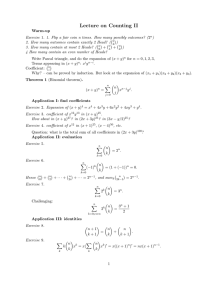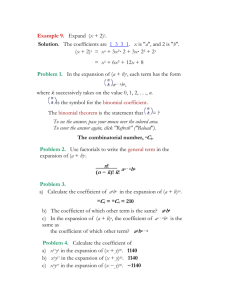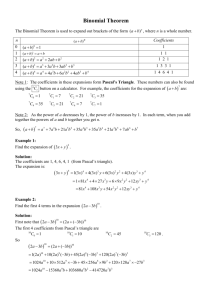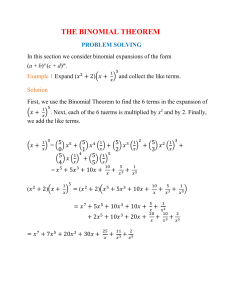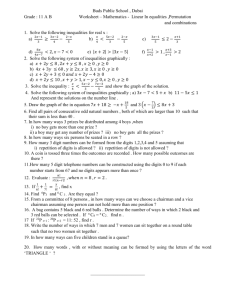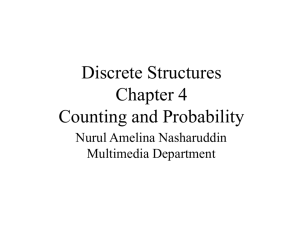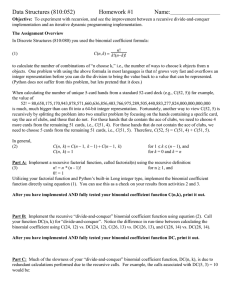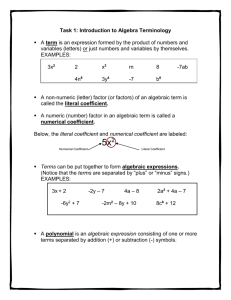Pascal Formula for Binomial Coefficient, doc
advertisement
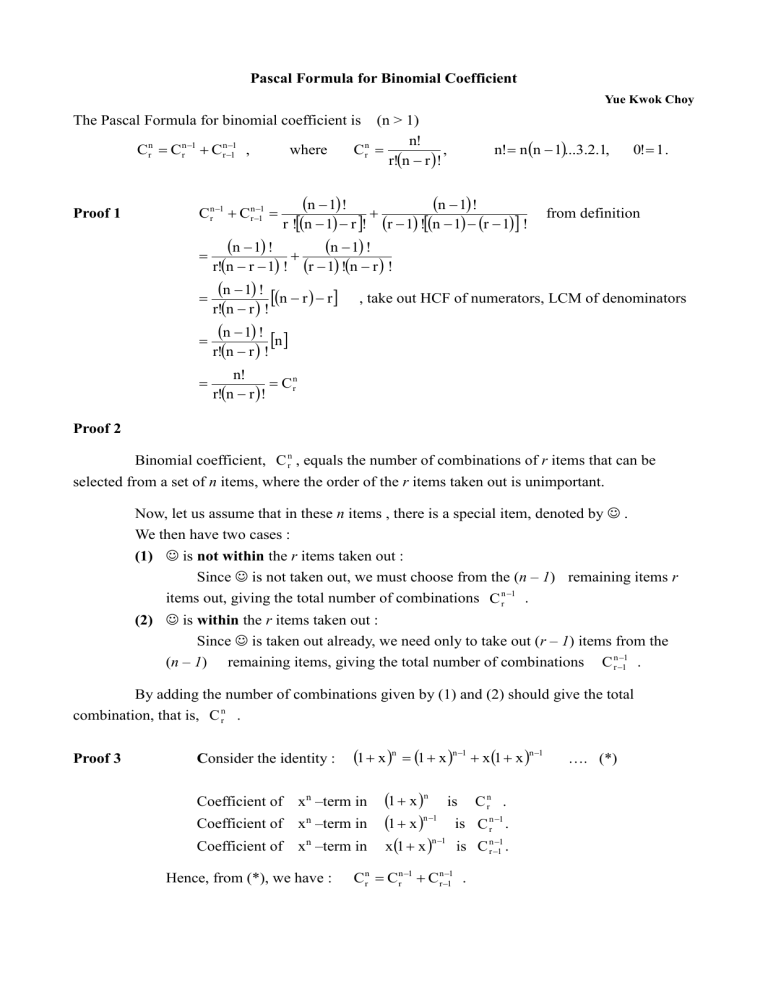
Pascal Formula for Binomial Coefficient Yue Kwok Choy The Pascal Formula for binomial coefficient is C nr C nr 1 C nr 11 , Proof 1 where (n > 1) n! C nr , r!n r ! n! n n 1...3.2.1, 0! 1 . n 1 ! n 1 ! from definition r !n 1 r ! r 1 !n 1 r 1 ! n 1 ! n 1 ! r!n r 1 ! r 1 !n r ! n 1 ! n r r , take out HCF of numerators, LCM of denominators r!n r ! n 1 ! n r!n r ! C nr 1 C nr 11 n! C nr r!n r ! Proof 2 Binomial coefficient, C nr , equals the number of combinations of r items that can be selected from a set of n items, where the order of the r items taken out is unimportant. Now, let us assume that in these n items , there is a special item, denoted by . We then have two cases : (1) is not within the r items taken out : Since is not taken out, we must choose from the (n – 1) remaining items r items out, giving the total number of combinations C nr 1 . (2) is within the r items taken out : Since is taken out already, we need only to take out (r – 1) items from the (n – 1) remaining items, giving the total number of combinations C nr 11 . By adding the number of combinations given by (1) and (2) should give the total combination, that is, C nr . Proof 3 Consider the identity : 1 x n 1 x n1 x 1 x n1 Coefficient of xn –term in Coefficient of xn –term in Coefficient of xn –term in Hence, from (*), we have : 1 x n is 1 x n 1 is n 1 x 1 x is C nr C nr 1 C nr 11 . C nr . C nr 1 . C nr 11 . …. (*)
